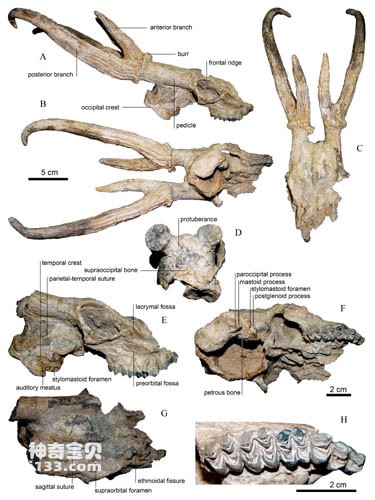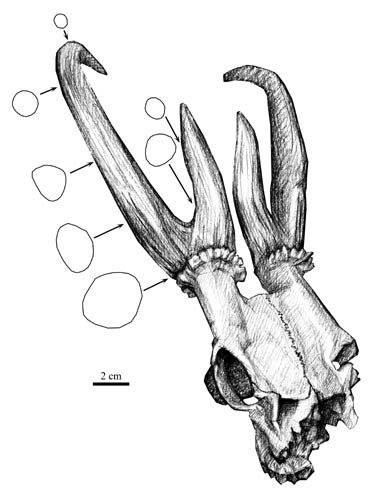Researcher Deng Tao from the Institute of Vertebrate Paleontology and Paleoanthropology of the Chinese Academy of Sciences and others recently published in the international journal Zootaxa a new species of Eostylopsus discovered in the Late Miocene strata of the Linxia Basin in Gansu. , its age is 8 million years ago. According to research, this new species has the world's first known skull fossil of an Eostela anthrax.
Austrian paleontologist Otto Zdansky established Eostyloceros and its two species in 1925 based on late Miocene materials collected from Wuxiang County, Shanxi Province. This species has since been reported in Asia and Europe. Some other species of the genus. However, the establishment of these species is based on antler materials, and most of them are incomplete. No skulls connected to the antlers have been found, so their reliability is highly doubtful.
The Linxia Basin in Gansu is famous for its rich late Cenozoic mammal fossils. A muntjac skull with complete antlers was recently discovered during field surveys in Hezheng County in the basin. The new material discovered in the Linxia Basin has been studied as the first known skull fossil of Eostyloceros in the world. According to its establishment, the new species and policy Eostyloceros (Eostyloceros hezhengensis sp.nov.) is a large muntjac. . The developed longitudinal ridge on the lateral edge of the frontal bone of the new species is connected to the horn stalk backward; the horn stalk is short, thick and cylindrical, extending backward from behind the orbit; the main branch and eyebrow branch of the antlers are at an angle of 30 degrees from each other. Angular rings emerge; the main branch is quite long, the tip is strongly curved backwards; the eyebrow branch is straight, located anteromedial to the main branch; the main branch is laterally flat, while the cross section of the eyebrow branch is round.
Paleontologists previously knew very little about the phylogenetic relationships of Eostelacerus, but cladistic analysis based on new materials established for the first time a detailed pedigree including the various species within Eostelacerus as well as the genus and other muntjacs. Morphological observation, combined with cladistic analysis and principal component analysis, indicates that the original characters of Hezheng's antlered deer include shorter horn stalks, lower branches on the horn rings, slimmer brow branches, and the angle between the brow branches and the main branch. Rather small, proving that this new species is in a more basal position than any known species of the genus.

Figure 1 The skull fossil of the Hezhengshijiantler deer collected from the Linxia Basin in Gansu Province

Figure 2 Sketch of the skull fossil of Hezhengzhengzhuangler deer and the cross-sectional changes of its antlers
animal tags:
We created this article in conjunction with AI technology, then made sure it was fact-checked and edited by a Animals Top editor.